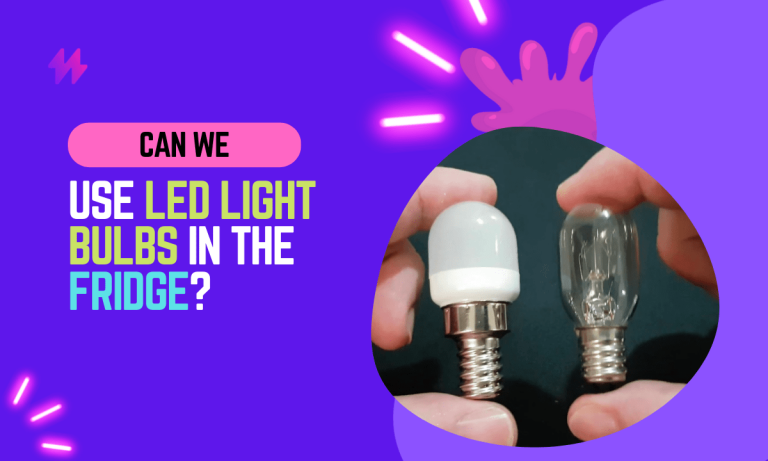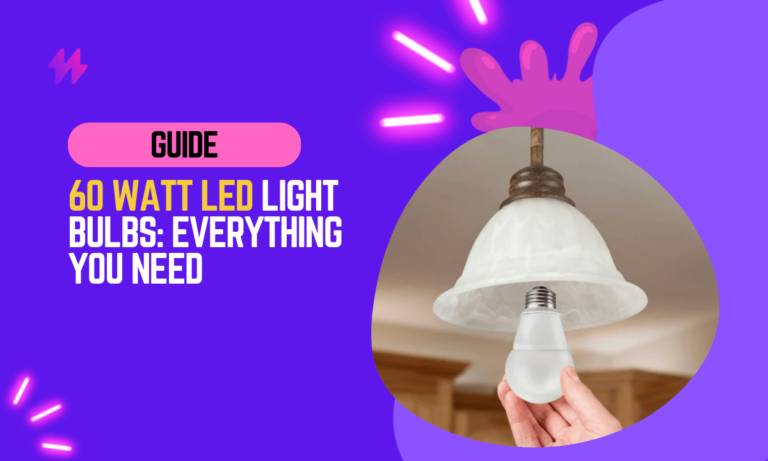How to Choose a Wireless Light Bulb Camera?
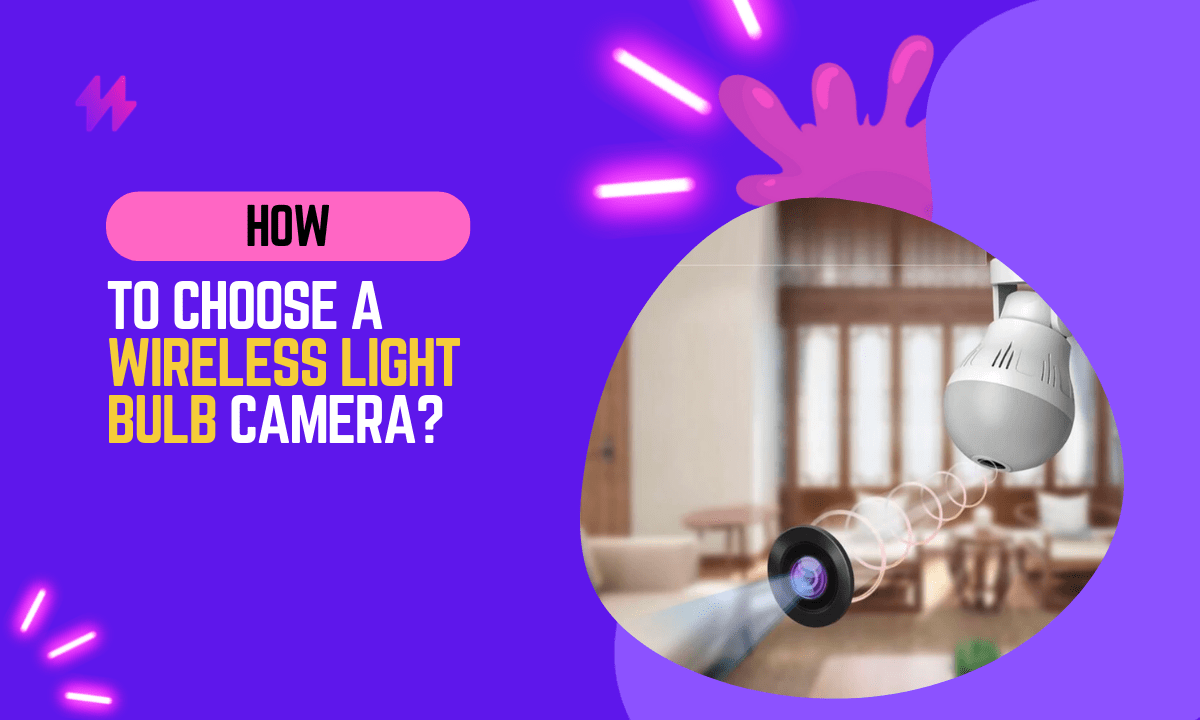
Have you ever wanted to be able to see what’s going on in your home while you’re away? With a wireless light bulb camera, you can do just that. These cameras are small and discreet, and they can be easily hidden in a light bulb socket. They’re perfect for keeping an eye on your home while you’re at work, on vacation, or just running errands.
In my experience, I’ve seen a lot of problems with wireless light bulb cameras. The most common problem is that the camera stops working. This can be caused by several factors, including:
- Power issues: If the camera isn’t getting enough power, it will eventually stop working.
- Network issues: If the camera is unable to connect to your Wi-Fi network, it won’t be able to send you any video footage.
- Firmware issues: If the camera’s firmware is outdated, it may not be able to properly function.
If you’re experiencing problems with your wireless light bulb camera, don’t despair.
In this article, I’ll show you how to troubleshoot and fix common problems. I’ll also provide tips on how to keep your camera running smoothly.
So if you’re ready to learn how to fix your wireless light bulb camera, read on!
In addition to troubleshooting, it’s essential to understand how to choose a wireless light bulb camera that suits your needs. By selecting a good camera quality model with features like night vision and motion sensor capabilities, you can ensure that your home is secure and monitored effectively.
Understanding Wireless Light Bulb Cameras: Choosing the Best Wi-Fi Bulb Cameras and Their Benefits
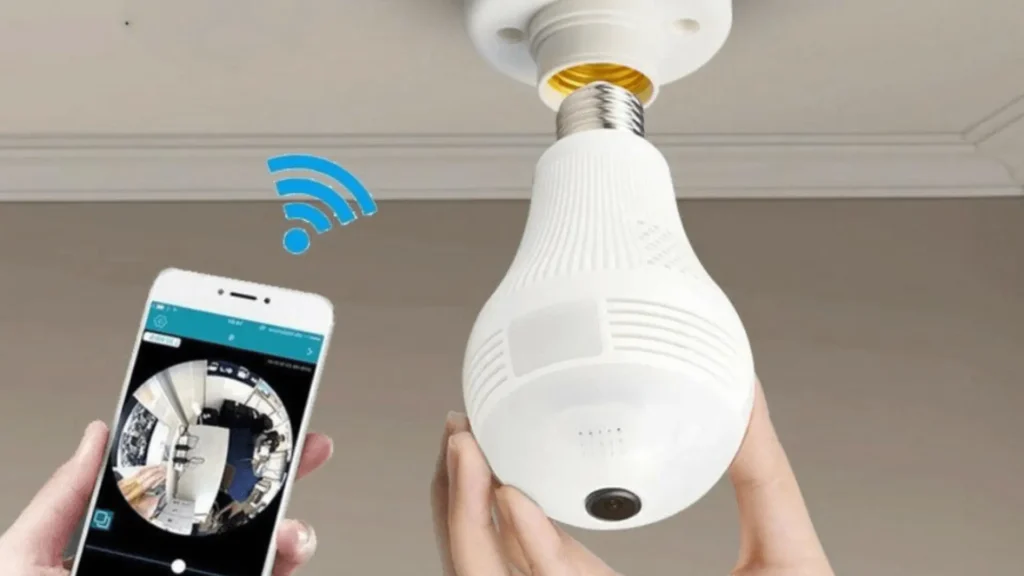
A wireless light bulb camera is a type of security camera that is disguised as a light bulb. It is typically used to discreetly monitor a room or area without being noticed.
Wireless security light bulb cameras are typically battery-powered and can be connected to a Wi-Fi network. They often have night vision capabilities and can be viewed remotely via a smartphone or computer as it’s a smart bulb.
The wireless light bulb camera offers a practical solution for discreet surveillance, blending in with regular light fixtures while providing security benefits. Its integration of sensors and night vision capabilities makes it an effective choice for home monitoring, ensuring that users remain informed of any activity within their premises. In today’s evolving technology landscape, selecting the perfect wireless security camera involves considering diverse features to maximize effectiveness. Moreover, with advancements in smart camera technology, setting up a wifi light bulb can enhance both illumination and surveillance capabilities in your home.
Advantages of Choosing Light Bulb Cameras: Exploring WiFi Light Bulb Options and Camera Light Bulb Benefits
There are several benefits to using a wireless light bulb camera, including:
There are several benefits to using a wireless light bulb camera, including its ability to seamlessly integrate into home lighting fixtures while providing robust security features. These compact cameras are designed to function as both light sources and surveillance devices, ensuring your space remains well-illuminated and monitored effectively.
- Discretion: Wireless light bulb cameras are designed to be inconspicuous, making them ideal for covert surveillance. They can be easily hidden in a light fixture, making it difficult for potential intruders to spot them.
- Portability: Wireless light bulb cameras are typically small and lightweight, making them easy to transport and install. They can be moved from one location to another as needed, making them ideal for monitoring multiple areas.
- Remote viewing: Wireless light bulb cameras can be viewed remotely via a smartphone or computer. This allows you to keep an eye on your home or office even when you’re not there.
- Night vision: Many security light bulb cameras have night vision capabilities, allowing you to see images in low-light conditions. This makes them ideal for monitoring areas that are not well-lit.
Drawbacks to Consider When Using a Wireless Light Bulb Camera
There are also some drawbacks to using a wireless light bulb camera, including:
- Cost: Wireless light bulb cameras can be more expensive than other types of security cameras.
- Battery life: Wireless light bulb cameras typically run on batteries, which can need to be replaced regularly.
- Security: Wireless light bulb cameras are connected to a Wi-Fi network, which can make them vulnerable to hacking.
Also read: Can you Paint LED Light Bulbs?
While the wireless light bulb camera offers many advantages, there are also certain drawbacks, such as potential connectivity issues or limitations on camera quality due to its compact design. Moreover, it is crucial to consider factors like resolution and lens options when evaluating various surveillance cameras, as these attributes can greatly impact the overall effectiveness of your security system.
Selecting the Right Wireless Light Bulb Camera for Your Needs
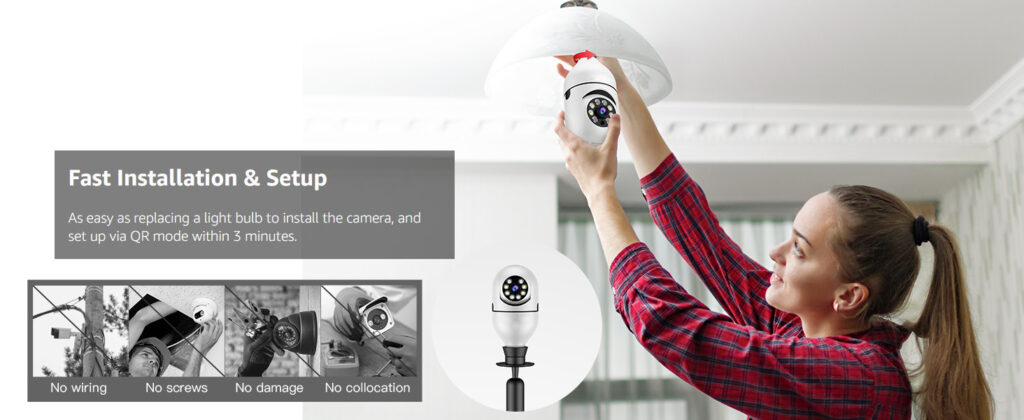
When choosing a wireless light bulb camera, there are several factors to consider, including:
When choosing a wireless light bulb camera, there are several factors to consider, including the camera’s resolution and its lens type. Ensuring the camera light bulb integrates well with existing light sockets will enhance your home’s surveillance capabilities, allowing you to maximize the use of both your light and security camera systems. Additionally, opting for a wifi light bulb will provide seamless connectivity, further enhancing your overall security camera experience.
- Resolution: The resolution of the camera is important for capturing clear images. Look for a camera with a resolution of at least 1080p.
- Night vision: If you plan on using the camera in low-light conditions, make sure it has night vision capabilities.
- Field of view: The field of view of the camera determines how much of the area it can see. Look for a camera with a wide field of view so you can cover a large area.
- Battery life: Wireless light bulb cameras typically run on batteries, so it’s important to choose a camera with a long battery life.
- Wi-Fi connectivity: Make sure the camera is compatible with your Wi-Fi network.
- Price: Wireless light bulb cameras can range in price from a few dollars to hundreds of dollars. Choose a camera that fits your budget.
How to Choose and Install a Wireless Light Bulb Camera: A Comprehensive Guide
Installing a wireless light bulb camera is typically a simple process. The following steps will walk you through the process:
- Choose a location for the camera. The best location for the camera is in a place where it can get a clear view of the area you want to monitor.
- Remove the old light bulb. Turn off the power to the light fixture and unscrew the old light bulb.
- Install the wireless light bulb camera. Insert the wireless light bulb camera into the light fixture and screw it in.
- Connect the camera to your Wi-Fi network. Follow the instructions in the camera’s manual to connect it to your Wi-Fi network.
- Test the camera. Once the camera is connected to your Wi-Fi network, you can test it by viewing the live feed on your smartphone or computer.
You may also like: Why Do Some LED Lights Flicker on Camera and Video?
Installing a wireless light bulb camera not only enhances security but also integrates seamlessly into your existing lighting setup, providing both illumination and monitoring capabilities. By choosing the right light camera bulb with features like a wide-angle lens or night vision feature, you can significantly improve your home’s surveillance without sacrificing the aesthetic of traditional lighting fixtures.
How to Use a Wireless Light Bulb Camera: Tips on How to Choose a Wireless Light Bulb Camera
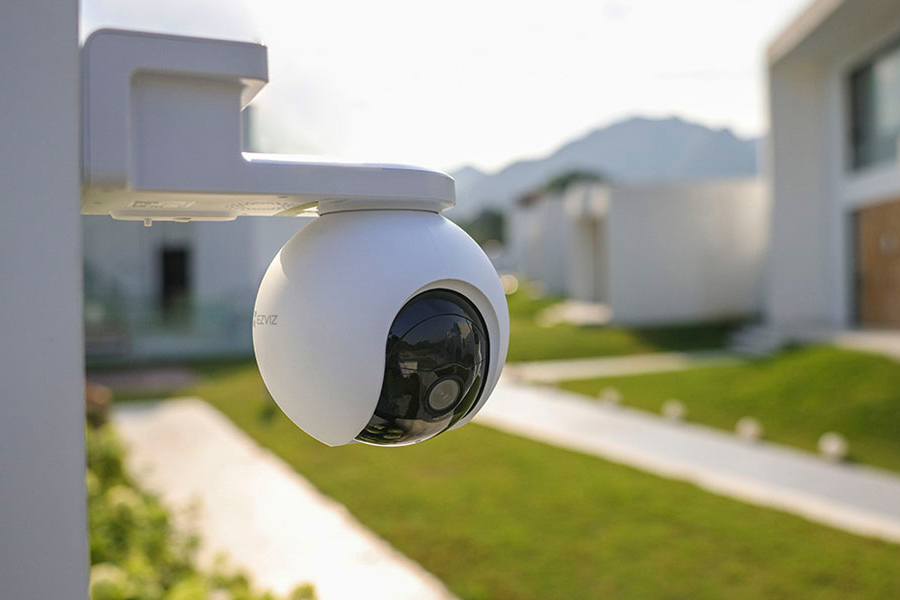
Once you have installed your wireless light bulb camera, you can use it to monitor your home or office remotely. The following steps will walk you through the process:
1. Open the app for your wireless light bulb camera. The app will be available on the App Store or Google Play.
2. Log in to the app with your account information.
3. Select the camera you want to view. The app will list all of the cameras that are connected to your Wi-Fi network.
4. View the live feed from the camera. The live feed will show you what the camera is seeing.
5. Record or take pictures from the camera. You can use the app to record videos or take pictures from the camera.
6. Control the camera’s settings.
Also read: How to Dim A Light Bulb? 6 Effective Ways
To effectively monitor your space, it’s important to familiarize yourself with the app for your wireless device, ensuring seamless connectivity for viewing live video footage. Remember, each camera connected to your Wi-Fi system can provide accurate activity footage, enhancing your overall home security through innovative tech solutions.
Frequently Asked Questions About Wireless Light Bulb Cameras
Below you can find the most frequently asked questions about Wireless Bulb Camera:
When evaluating the options for home surveillance, wireless light bulb cameras present a versatile integration of security features with conventional lighting. The dual functionality of these cameras, such as features like a tilt camera or a panoramic camera, allows users to maintain a discreet aesthetic while enhancing their home security system. In addition to that, investing in an ultra high-resolution light bulb security camera ensures that your monitoring needs are met without compromising on quality or appearance. By utilizing an intelligent light bulb, you can convert ordinary light fixtures into smart home cameras, improving both illumination and safety for any domestic environment.
Exploring the Drawbacks of Using a Wireless Light Bulb Camera: Insights and Considerations
There are a few drawbacks to using a wireless light bulb camera, including:
While there are some limitations to using wireless light bulb cameras, such as potential connectivity issues and their compact design affecting camera quality, they still offer a versatile option for home security. By integrating features like a panoramic camera or fish-eye lens within the lightbulb shape, these innovative devices can enhance both illumination and surveillance capabilities, making them an attractive choice for modern smart home setups.
- Limited range: The range of a wireless light bulb camera is typically limited to the range of your home Wi-Fi network. This means that you may not be able to monitor your home or business if you are away from home.
- Battery life: Wireless light bulb cameras typically require batteries to operate. This means that you will need to remember to replace the batteries regularly.
- Security concerns: Wireless light bulb cameras can be hacked, just like any other type of wireless device. This means that it is important to take steps to protect your camera from being accessed by unauthorized users.
Choosing the Best Wireless Light Bulb Camera: A Comprehensive Guide
When choosing a wireless light bulb camera, there are a few factors you should consider, including the resolution, Night Vision, Motion Detection, and Price.
In the realm of home security, wireless light bulb cameras emerge as a modern solution that provides both functionality and aesthetic appeal. As a versatile option among surveillance camera devices, these innovative gadgets, which include features like a zoom lens and motion detection, ensure that your space is monitored effectively while blending seamlessly with everyday light bulbs.
Where to Purchase a Wireless Light Bulb Camera: Your Guide to Smart Surveillance
Wireless light bulb cameras are available for purchase online on sites like Amazon, Walmart, and electronics retailers.
You may also like: Which Is the Brightest Light Bulb?
Wireless light bulb cameras are revolutionizing home security by merging traditional lighting with advanced surveillance technology. These innovative devices can be easily installed in standard A19 light sockets, allowing you to achieve an effective monitoring solution without the need for separate security cameras. With their discreet design and varied features like fisheye lenses and optical zoom, these light bulb security cameras are an excellent addition to any smart home. The integration of wifi features enables seamless connectivity with electronic devices, providing real-time monitoring of your property.
Conclusion: Final Words on Wireless Light Bulb Cameras
In conclusion, choosing a wireless light bulb camera involves navigating a blend of lighting and surveillance technologies to enhance security while maintaining the aesthetic and functional integrity of a space. When selecting such a device, it is crucial to prioritize features that align with specific security needs and environmental conditions. Key factors to consider include the camera’s resolution, which affects the clarity and detail of the footage, and the field of view, which determines the extent of the area covered. Additionally, the ability of the camera to capture high-quality video in low-light conditions is vital, as this significantly enhances its effectiveness during nighttime. Connectivity options are also essential; ensuring that the camera can reliably connect to home Wi-Fi networks and integrate smoothly with other smart home devices enhances user convenience and overall system efficiency.
Moreover, the discreetness of the camera’s design can be a critical consideration for those seeking to maintain the natural aesthetics of their home or office. Many wireless light bulb cameras are designed to look like regular bulbs, offering covert surveillance without drawing attention. Advanced features such as motion detection, real-time alerts, and the ability to stream video to smartphones or other devices are also important for providing dynamic and responsive security solutions. Furthermore, considering the ease of installation and the compatibility of the camera with existing lighting fixtures will ensure that the integration process is seamless and does not require significant modifications to current setups. By carefully assessing these features, consumers can select a wireless light bulb camera that not only meets their security needs but also fits naturally into the environment of their home or business, providing peace of mind with minimal intrusion.
How To Choose A Wireless Light Bulb Camera | Factors to Consider When Choosing a Wireless Light Bulb Camera
Choosing the right wireless light bulb camera involves careful consideration of several key factors. Resolution and image quality are paramount; a high-resolution camera ensures clear, vivid footage, especially in lower light conditions. Look for features like optical zoom or fisheye lenses to enhance the camera’s capabilities, while also considering the type of light source used, such as standard A19 bulbs or high-output LED lighting. Smart home compatibility is crucial, making sure the device seamlessly integrates with existing electronic devices and supports Wi-Fi signals for effective live footage transmission. Evaluate the camera’s motion detection features and low-light sensitivity to maximize functionality, while also focusing on the ease of installation and the specific needs of your security setup. Ultimately, understanding these features will help in selecting the best bulb security camera for your home or business.
How to Choose a Wireless Light Bulb Camera | Resolution and Image Quality
Choosing a wireless light bulb camera requires consideration of resolution and image quality, as these factors significantly influence performance. Many models feature high-resolution capabilities, allowing for clearer images and better identification of faces and details. Standard options may range from 720p to 1080p, while some premium surveillance lights offer up to 4MP for more accurate footage. The camera portion’s quality can enhance the performance of intelligent light bulbs, ensuring that even low-light scenarios are adequately captured, which is crucial for effective home surveillance.
Image quality also plays a vital role in the effectiveness of wireless systems. Cameras that support advanced features such as night vision and motion detection provide better monitoring capabilities, making them ideal for security purposes. Various models, such as the megapixel lightbulb camera, contribute to improved light output and clarity, especially in challenging conditions. Selecting a model with a stationary wide-angle lens or a tilt camera can provide extensive coverage of areas, while ensuring that the camera bulb records clearly. This combination of resolution and advanced features ensures that users can effectively monitor their homes using security bulb cameras.
Night Vision and Motion Detection Features
Selecting a wireless light bulb camera involves understanding the night vision capabilities, which are crucial for effective surveillance in low-light conditions. Many models come equipped with infrared technology, allowing them to capture clear images even in complete darkness, which is essential for outdoor security. Opting for cameras with features like PIR motion sensors can enhance the detection of movement, ensuring that the camera only records significant events. This can be particularly useful in minimizing unnecessary alerts and maximizing the efficiency of the security system, helping users to choose the most appropriate device for their needs.
Motion detection features also play a vital role in determining the effectiveness of a wireless light bulb camera. Some advanced options utilize on-device detection technology to differentiate between humans and pets, reducing false alarms. Camera settings can be tailored to suit individual preferences, which can include adjusting sensitivity levels or setting specific activity zones. Whether you select a smart camera light, a traditional light bulb security option, or a more sophisticated model like a 360-degree light bulb, understanding these features will profoundly affect the overall performance of your security setup.
Comparing Different Brands of Wireless Light Bulb Cameras
Various brands of wireless light bulb cameras stand out in the market, each offering different features that cater to specific needs. For those exploring how to choose a wireless light bulb camera, understanding the unique attributes of brands is essential. Some brands focus on high-resolution capabilities, competing with traditional security cameras and high-performing PTZ cameras, while others prioritize ease of installation and integration with smart home systems. The standard A19 lightbulb shape is common, but innovative designs can enhance functionality, such as dual-functionality lights that combine security with illumination. Brands like LaView and WyzeCam provide affordable options with features like motion detection and night vision, appealing to budget-conscious consumers. Waterproof models are also available for outdoor use, ensuring reliability in various weather conditions. By comparing price ranges, quality, and technological specs like video transmission and camera software, consumers can find a model that offers the best value for their specific monitoring needs.
Popular Brands and Their Unique Features
Several brands offer unique features that enhance the functionality of wireless light bulb cameras. For instance, Laview cameras provide high-resolution image quality, making them an ideal choice for those who prioritize clear footage. Zmodo camera models often include advanced motion detection and night vision capabilities. Features like waterproof light bulbs and the ability to connect to a smart home system add convenience. Users seeking security light bulbs that blend seamlessly with their existing lighting will find options like smart light bulbs appealing. These brands cater to both indoor and outdoor light bulb needs, ensuring versatility in various environments.
Security camera bulb options vary significantly between brands, with many offering proprietary technologies that set them apart. Some manufacturers focus on providing exceptional wifi features that ensure reliable camera feed and connectivity. For users looking for cost-effective solutions, there are cheap security cameras that still perform well. High-quality brands often include multi-device integration, enabling seamless monitoring through smartphones or tablets. This allows users to easily manage numerous wifi bulb cameras from a single app, making it simpler to enhance their security surveillance at home or in businesses.
Price Ranges and Value for Money
The price of wireless light bulb cameras can vary significantly based on their features and brand. Entry-level models, often referred to as basic light bulbs or ordinary lightbulb cameras, can be found at budget-friendly prices while still offering essential functions such as a decent resolution and motion detection. On the higher end, smart home cameras integrated with advanced capabilities like high-resolution imaging and improved night vision often come at a premium. Understanding how to choose a wireless light bulb camera involves balancing these costs against the desired features for your surveillance needs.
Value for money entails considering the long-term benefits of a security lamp camera compared to traditional cameras. While some generic cameras or cheap models may save money upfront, they often lack in image quality or durability. Investing in light bulb shape cameras that provide robust features—such as quality surveillance devices with excellent wifi signal and low light performance—can result in effective monitoring. The best-selling cameras frequently combine functionality and affordability, ensuring that users can achieve reliable surveillance without breaking the bank.
How to Install a Wireless Light Bulb Camera Effectively
Installing a wireless light bulb camera can significantly enhance your home security while utilizing the existing light fixtures. The first step is understanding how to choose a wireless light bulb camera that suits your needs, focusing on features like resolution, night vision, and motion detection. Ensure the camera fits into a standard light socket, whether it’s a regular light bulb or a more specialized device like a wire-free spotlight camera. Before installation, check the camera’s watt requirements and confirm that your existing watt bulbs can provide enough light for optimal performance. Consider the camera location to ensure the best-monitored camera captures the desired area effectively. Follow the steps for wireless installation carefully, ensuring that the camera case is securely attached to the light socket and the connection to the Wi-Fi setup is seamless, allowing you to access the footage remotely. Prioritize positioning the camera to take advantage of light shaping and avoid obstructions, which can hinder the functionality of your monitoring camera.
Preparing for Installation
Before diving into the installation process, it’s essential to understand how to choose a wireless light bulb camera that best fits your needs. Determine if you prefer a high-resolution light with features like night vision and motion detection. Assess whether you want a bulb that functions as a security surveillance tool or a regular bulb light that offers additional functionality. This choice affects how effective your bulb security surveillance will be. Consider the light socket adapter requirements for different wifi light options since compatibility may vary among bulb manufacturer companies.
Preparing your space is crucial for an efficient installation. Ensure the area is well-lit and free from obstructions for optimal performance of the actual camera portion. Familiarize yourself with your new device, whether it be a camera light bulb or traditional wireless cameras, to ensure you understand its features and functionality. Identify locations where the bulb security cameras can provide the best coverage. Depending on your needs, you might want to select areas that allow for separation of lighting and surveillance. By assessing your environment, you can maximize the effectiveness of your light camera light.
StepbyStep Installation Process
Installing a wireless light bulb camera requires a straightforward approach to ensure optimal functioning. Begin by determining the best location for the installation, ideally where the camera can provide maximum coverage of your desired area. Consider whether the existing fixture can accommodate a camera light bulb, or if you need to replace a normal light bulb with a wi-fi light bulb or a security bulb. Ensure the light socket is compatible with the wireless wifi device. Proper placement will help the camera work effectively, whether you choose a newer model like the Wyze cam or any equivalent carriage lights that provide immediate security benefits.
Once you’ve prepared the installation site, follow the manufacturer’s instructions to set up your camera. Most light bulb cams operate like traditional light bulbs, making them easy to install by simply screwing them into a standard light socket. Connect the camera to your Wi-Fi network using the dedicated app, which often allows for real-time monitoring similar to how CCTV cameras operate. After pairing, adjust the angle of the camera to cover the intended area and test the camera’s performance to ensure clear image quality and functionality. Remember to regularly check for updates and firmware improvements that can enhance the performance of your new devices.



